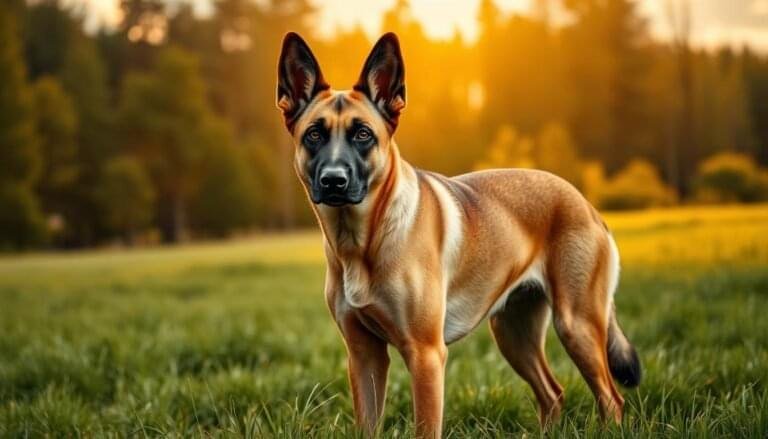Havanese dogs are a beloved breed known for their playful personalities, affectionate nature, and luxurious coat. If you’re considering bringing a Havanese into your home, or if you already have one, it’s important to understand their history, characteristics, care, and training needs. In this comprehensive guide, we’ll cover everything you need to know about Havanese dogs.
Introduction to Havanese Dogs
Havanese dogs, also known as Havana Silk Dogs, are a small breed originally from Cuba. They were developed as companion dogs and were highly valued by Cuban society. Today, Havanese dogs are popular all over the world for their loving personalities and unique appearance.
History of the Havanese Dog Breed
The Havanese breed has a long and fascinating history that dates back to the early 16th century. They were originally bred in Cuba as lap dogs for the upper class, and were highly valued for their affectionate nature and luxurious coat. Over time, the breed developed into a beloved companion dog for people from all walks of life.
Physical Characteristics of Havanese Dogs

Havanese dogs are a small breed that typically weigh between 7 and 13 pounds. They have a distinctive long, silky coat that comes in a variety of colors, including white, black, and cream. They have expressive eyes and a lively, wagging tail.
Personality and Temperament of Havanese Dogs
Havanese dogs are known for their playful and affectionate nature. They love to be around people and thrive on attention and affection. They are also highly adaptable and can do well in a variety of living situations, from apartments to large homes.
Health Issues and Lifespan of Havanese Dogs
Like all breeds, Havanese dogs can be prone to certain health issues, including hip dysplasia, cataracts, and allergies. However, with proper care and attention, Havanese dogs can live long, healthy lives. The average lifespan for a Havanese is 12 to 14 years.
Grooming and Care for Havanese Dogs
Havanese dogs have long, silky coat that requires regular grooming to keep it healthy and shiny. Here are some grooming tips for Havanese dogs:
- Brush their coat daily: Havanese dogs have long, silky coat that can become matted and tangled if not brushed regularly. Brush their coat daily to keep it healthy and tangle-free.
- Bathe them regularly: Havanese dogs should be bathed every 3-4 weeks to keep their coat clean and shiny. Use a mild dog shampoo and make sure to rinse thoroughly.
- Trim their hair: Havanese dogs have hair that grows continuously, so it’s important to trim it regularly. Trim the hair around their eyes, ears, and paws to keep them clean and prevent irritation.
- Clean their ears: Havanese dogs are prone to ear infections, so it’s important to keep their ears clean and dry. Use a cotton ball or soft cloth to clean their ears, and make sure to dry them thoroughly.
- Clip their nails: Havanese dogs’ nails should be clipped regularly to prevent them from becoming too long and causing discomfort. Use a nail clipper designed for dogs and be careful not to cut the quickly.
Training and Exercise for Havanese Dogs
Havanese dogs are highly intelligent and trainable, but they can also be stubborn at times. They respond well to positive reinforcement training techniques, such as clicker training and reward-based training. Additionally, Havanese dogs need regular exercise to keep them healthy and happy.
Socialization for Havanese Dogs
Socialization is crucial for all dogs, including Havanese dogs. It helps them learn to interact with other dogs and people in a positive way. This, in turn, can prevent unwanted barking and other behavior problems. Here are some tips for socializing your Havanese:
- Start early: Begin socializing your Havanese as soon as possible. Ideally, you should start socializing them when they are puppies. This is when they are most receptive to new experiences and are still developing their personalities.
- Use positive reinforcement: Reward your Havanese with treats, toys, and praise when they exhibit good behavior during socialization. This will encourage them to continue to behave well.
- Expose them to a variety of experiences: Introduce your Havanese to a variety of experiences, such as different people, other dogs, and different environments. This will help them become comfortable in different situations.
- Take it slow: If your Havanese seems uncomfortable or scared, take things slow. Gradually introduce them to new experiences and environments at a pace that they are comfortable with.
- Use caution around other dogs: While socializing your Havanese with other dogs, it’s important to use caution. Make sure the other dogs are friendly and well-behaved, and monitor the interaction closely.
Havanese dog diet and Nutrition
Diet and nutrition are critical for the health and well-being of Havanese dogs. A balanced and nutritious diet is essential to maintain their energy levels, promote healthy growth and development, and prevent various health issues.
Havanese dogs require a well-balanced diet that includes high-quality proteins, carbohydrates, healthy fats, vitamins, and minerals. Their diet should be rich in lean proteins such as chicken, turkey, fish, and lean red meat, which provide them with the necessary amino acids for healthy growth and maintenance of muscles.
Carbohydrates are also an essential part of the Havanese diet. They provide the energy necessary to support the dog’s active lifestyle. Good sources of carbohydrates for Havanese dogs include whole grains, vegetables, and fruits. Brown rice, oats, sweet potatoes, carrots, and peas are excellent sources of carbohydrates that can be included in their diet.
Healthy fats are also an essential part of a Havanese dog’s diet. Omega-3 and omega-6 fatty acids are crucial for maintaining healthy skin and coat, promoting a healthy immune system, and supporting cognitive function. Good sources of healthy fats include fish oil, flaxseed oil, and chicken fat.
Havanese dogs also require a variety of vitamins and minerals to maintain their overall health. They need calcium and phosphorus for strong bones and teeth, while iron and zinc are necessary for a healthy immune system. Vitamins A, D, E, and K are also important for their overall health and well-being.
When it comes to feeding Havanese dogs, it is essential to choose high-quality dog food that meets their nutritional needs. Commercial dog food that is formulated for small breeds is an excellent option, as it is tailored to their unique needs. It is also essential to feed them the appropriate amount of food based on their age, weight, and activity level to prevent overfeeding and obesity.
Havanese dogs can also benefit from a homemade diet that includes fresh, whole foods. However, it is crucial to consult with a veterinarian or a canine nutritionist to ensure that their homemade diet is balanced and meets all their nutritional needs.
Homemade Dog Food for Havanese
Homemade dog food can be a great option for Havanese dogs if done correctly. It allows you to control the ingredients and ensure that your dog is getting a balanced and nutritious diet. When making homemade dog food, it’s important to consult with a veterinarian or canine nutritionist to ensure that you are meeting your dog’s specific dietary needs.
A good homemade dog food recipe for Havanese dogs might include a combination of lean protein sources such as chicken, turkey, or fish, along with healthy carbohydrates like sweet potatoes, brown rice, or quinoa. It’s also important to include a variety of vegetables, such as green beans, carrots, and spinach, which can provide important vitamins and minerals.
When making homemade dog food, be sure to avoid ingredients that are toxic to dogs, such as onions and garlic, and to use caution with spices and seasonings, which can upset a dog’s stomach. You can also consider adding supplements like fish oil or probiotics to support your dog’s health. Overall, with careful planning and preparation, homemade dog food can be a healthy and enjoyable option for your Havanese.
Common Havanese Behaviors and How to Address Them?
Havanese dogs are known for their cheerful and affectionate personalities, but like any breed, they may exhibit certain problem behaviors that can be challenging for owners. Some common Havanese behaviors include excessive barking, separation anxiety, and jumping on people.
To address excessive barking, it’s important to understand why your Havanese is barking and address the root cause. This may involve providing more exercise and mental stimulation, teaching alternative behaviors like “quiet,” or seeking professional help from a trainer or behaviorist.
Separation anxiety can be addressed by gradually desensitizing your Havanese to your departures and arrivals, providing plenty of exercise and mental stimulation, and using tools like calming supplements or pheromone sprays.
Jumping on people can be addressed by teaching your Havanese alternative behaviors like sitting or greeting people with a toy, as well as using positive reinforcement to reward appropriate behavior. Overall, addressing problem behaviors in Havanese dogs requires patience, consistency, and a commitment to positive training techniques.
Conclusion
The Havanese is a delightful breed with a rich history and many unique characteristics. These dogs are beloved for their affectionate nature, intelligence, and adaptability, but they also require careful attention to their health, grooming, and training needs. With proper care and training, Havanese dogs can make wonderful companions for individuals and families alike. Whether you’re considering adding a Havanese to your household or you’re already a proud owner, we hope that this comprehensive guide has provided you with valuable information and insights to help you give your Havanese the best possible care and training.
FAQs
1. What is the lifespan of a Havanese dog?
The average lifespan of a Havanese dog is 12-14 years.
2. Are Havanese dogs hypoallergenic?
Yes, Havanese dogs are considered hypoallergenic, as they produce less dander than some other breeds. However, no dog is completely hypoallergenic.
3. Do Havanese dogs shed a lot?
No, Havanese dogs do not shed a lot. They have a long, silky coat that requires regular grooming, but they do not shed excessively.
4. Are Havanese dogs good with children?
Yes, Havanese dogs are generally good with children. They are friendly, playful, and enjoy being around people of all ages.
5. Do Havanese dogs bark a lot?
Havanese dogs can be prone to excessive barking if they are not properly trained and socialized. However, with the right training, they can be taught to bark only when necessary.
6. How much exercise do Havanese dogs need?
Havanese dogs are a small breed that does not require a lot of exercise. A daily walk and some indoor playtime should be sufficient to keep them happy and healthy.
7. Are Havanese dogs easy to train?
Havanese dogs are generally intelligent and eager to please, which can make them easier to train than some other breeds. However, they can also be stubborn and require consistent training and positive reinforcement.
8. Do Havanese dogs have any health issues?
Like all breeds, Havanese dogs can be prone to certain health issues, such as hip dysplasia, patellar luxation, and cataracts. It’s important to choose a reputable breeder and schedule regular veterinary checkups to ensure your Havanese stays healthy.
9. How often should I groom my Havanese dog?
Havanese dogs require regular grooming to keep their long, silky coat in good condition. They should be brushed and combed at least once a week, and they may require professional grooming every 4-6 weeks.
10. Are Havanese dogs good apartment pets?
Yes, Havanese dogs can make excellent apartment pets. They are small in size, relatively quiet, and do not require a lot of exercise, making them a good choice for people who live in small spaces.
References
| Organization | Website |
| American Kennel Club (AKC) | https://www.akc.org/ |
| The Kennel Club (UK) | https://www.thekennelclub.org.uk/ |
| Canadian Kennel Club (CKC) | https://www.ckc.ca/ |
| Federation Cynologique Internationale (FCI) | https://www.fci.be/ |
| Australian National Kennel Council (ANKC) | https://www.ankc.org.au/ |
| United Kennel Club (UKC) | https://www.ukcdogs.com/ |
| International Canine Health Awards | https://www.kennelfund.org.uk/international-canine-health-awards/ |
| World Canine Organization (WCO) | https://www.wco-cyno.be/ |
Please also check out other articles on this website like
Toy Dog Breeds: Small Dogs with Big Personalities
Top 25 Medium Size Dog Breeds for First Time Owners
The Top 10 Best Large Dog Breeds for First Time Owners
Thanks.








[…] A Comprehensive Guide to Havanese Dogs 2023: History, Characteristics, Care, and Training […]
[…] A Comprehensive Guide to Havanese Dogs 2023: History, Characteristics, Care, and Training […]
[…] will provide you with all the information you need to know about American Foxhounds. From their characteristics and history to their care, training, and health, we’ll dive deep into the world of this remarkable fox hunting […]
[…] American Bulldogs and Scott American Bulldogs, named after their respective breeders, were carefully developed for their friendly temperament and strong characteristics. Their breeding efforts focused on creating loyal and protective family pets. These American […]
[…] your rabbit maintains a healthy weight is crucial for their overall well-being. By monitoring their food intake and adjusting their diet as needed, you can help prevent them from becoming underweight or overweight. Here are some tips to […]
[…] address foot biting in cats, a combination of cat training techniques and understanding your cat’s behavior is essential. By following these tips, you can train your cat to stop biting your […]